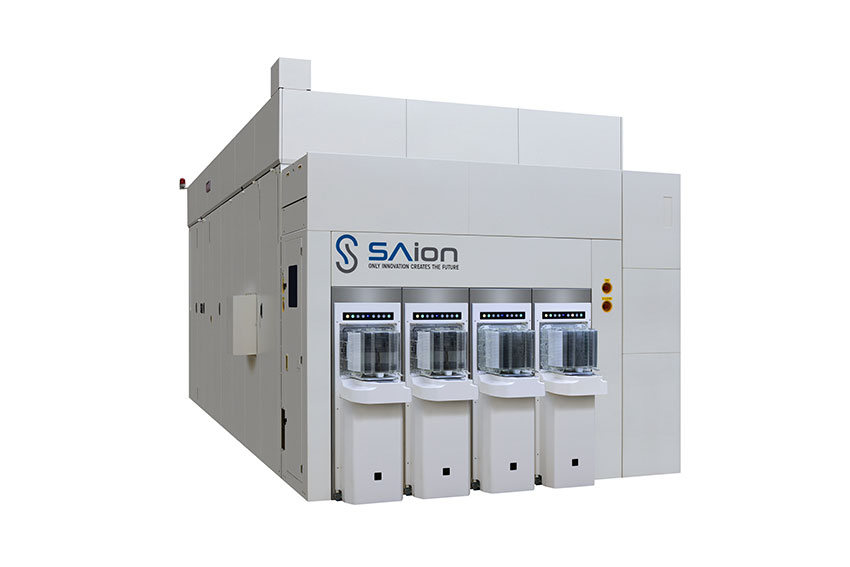

SMIT develops and manufactures ion implanters, which are essential for the production of semiconductor devices.

Working in the highly specialized field of ion implanters, Sumitomo Heavy Industries Ion Technology Co, Ltd. (SMIT) was first established in 1983 and has forged an enviable international reputation in the years since with four different types of machine currently available in-house.
According to company president Mitsukuni Tsukihara, even if Japan is no longer so active in the manufacturing of semiconductors, the country continues to prevail in the development of machinery for semiconductor production. High-quality products, he explains, quickly lose market value; high-quality machinery not only retains its value but can be customized for use in a range of different fields.
“One of the unique features of Japan’s research and development,” he continues, “is that the engineers work closely with the customers. The country’s great strength is when the requirements of the customers, the demands of the market and technology of the engineer all match at the same time.”
One of the group’s most notable products is the SAion, an all-in-one implanter that can reduce fine particles successfully while achieving a technical throughput of 500 pieces an hour.
Mr. Tsukihara explains how the technology works: “Most other companies use a different structure for high-current and mid-level current implanters, but we have established a commonality between these two currents. It isn’t simply a question of changing the power supply; rather, we have to provide a dynamic range that can reach up to six digits, and which requires a high level of precision when it comes to controlling the dose.”
Drawing an analogy with the automotive industry, where vehicles can be classified in terms of speed and load capacity, Mr. Tsukihara outlines his vision for the SAion. If SUVs or vans are becoming popular, he says, because they combine speed and load, then the SAion can be seen as the SUV of ion implantation with technology that offers clients the best of both worlds.
Looking to the future, Mr. Tsukihara confirms that the company is “actively seeking collaboration”, before outlining how such co-creation would function in practice.
First, there is collaboration within the SMIT group itself, with ion implanters divided into the categories of beaming technology and wafer transportation respectively. Second is the field of ionology or the study of ion sources, in which SMIT collaborates with universities and research institutes in pursuit of a common aim. And third is the work the company undertakes with customers, especially in the research and development phase, which enables it to create a “win-win situation from an early stage” of the process.
Mr. Tsukihara continues: “We are considering a sales agent, and we are trying to find a partner, specifically from North America and Europe, with whom we can collaborate to secure the supply chain and conduct research and development. Diversifying the supply chain has recently become important; hence, we are trying to create a stable supply chain.”
The company has also identified certain countries and regions for further expansion. “Eleven years ago we could not sell our products overseas due to contractual issues with both of our parent companies. We have since been able to go abroad on our own, starting in Taiwan and moving to China and Korea. This year, we established a base in North America to support the TMSC (Taiwan Semiconductor Manufacturing Company) fab in Arizona, and Europe will probably be next.”
Amidst his plans for expansion, however, Mr. Tsukihara is keen to emphasize the company’s human element. “The most essential component as company manager,” he says, “is to focus on the company’s sustainability, to meet the expectations of the graduates who enter the company after high school or university and stay for the next 40-50 years.”
The company’s responsibility, in other words, is to “lay out the foundation for the next generation and pass the baton to them.”
0 COMMENTS